Naqshe Rajab | Iran’s Sassanid Rock Reliefs
Naqshe Rajab is a significant historical site in Iran, showcasing some of the finest rock reliefs from the Sassanid Empire.
Located near the ancient city of Istakhr and just a short distance from the renowned Persepolis, the site features a collection of rock carvings that provide a visual narrative of Sassanid royal ceremonies and political achievements.
One of the primary attractions of Naqshe Rajab is its focus on the depiction of Sassanid rulers and religious figures. These reliefs were carved directly into the cliffs to commemorate important events, such as the coronations of kings and military victories. For tourists visiting the area, Naqshe Rajab offers an intimate look into the Sassanid period, a time when Persian art and culture flourished under royal patronage. Visitors can expect to see intricate carvings and detailed inscriptions that convey the power and grandeur of the Sassanid Empire. Positioned conveniently near other major attractions, Naqshe Rajab is an essential stop for anyone exploring the historical heart of Iran.
What is Naqshe Rajab?
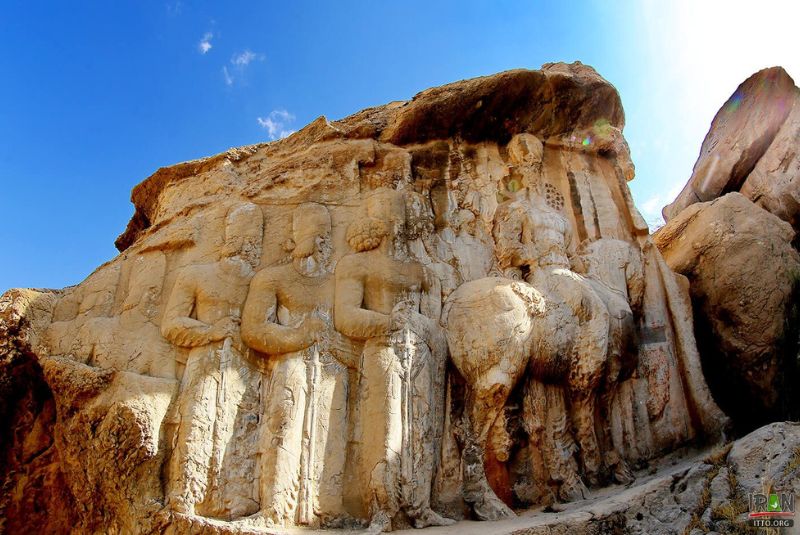
Naqshe Rajab is a historical site dedicated to the rock reliefs of the Sassanid Empire, a powerful dynasty that ruled from the 3rd to 7th century CE. The site is home to four major carvings, each reflecting pivotal moments in Sassanid history. These reliefs were created to honor the royal lineage and religious leaders of the empire, cementing their legacy in the landscape of ancient Persia.
The first relief is the Coronation of Ardashir I, the founder of the Sassanid Empire, depicted receiving the royal ring of power from the Zoroastrian god Ahura Mazda. This scene marks the beginning of a new era in Persian history, emphasizing the divine approval of Ardashir’s rule. The second carving illustrates Shapur I’s triumph over Roman emperors, highlighting one of the empire’s most celebrated military victories. In this depiction, Shapur is shown receiving the submission of defeated Roman leaders, symbolizing Persian dominance.
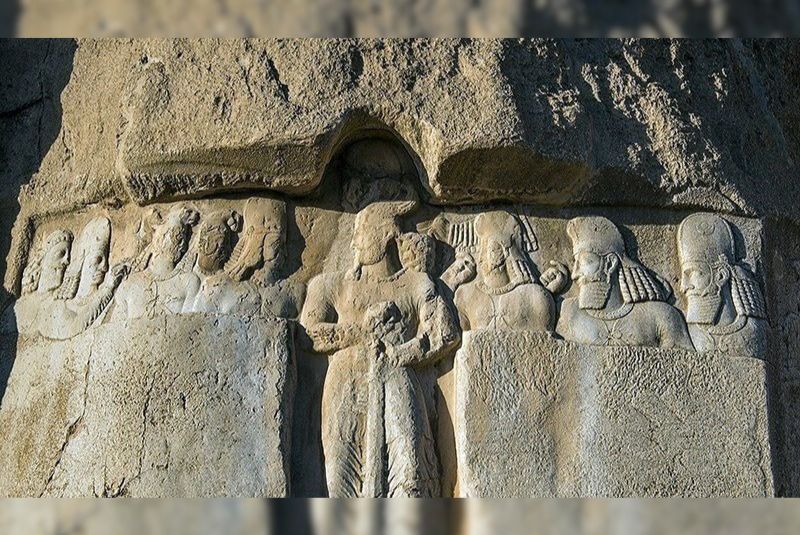
The third relief features Kartir, the influential high priest of Zoroastrianism. His inclusion among the royal figures signifies the importance of religion in Sassanid governance. Lastly, the fourth relief portrays the second coronation of Shapur I, further emphasizing the central role of royal power in Sassanid art.
The artistic style of Naqshe Rajab reflects the Sassanid approach to stone carving, characterized by detailed figures, ceremonial postures, and the use of symbolic imagery. Unlike Naqshe Rostam, which includes the tombs of Achaemenid kings and other types of carvings, Naqshe Rajab is focused entirely on the ceremonial aspects of Sassanid royal and religious life, making it a unique window into the priorities of the empire’s rulers.
Naqshe Rajab vs. Naqshe Rostam
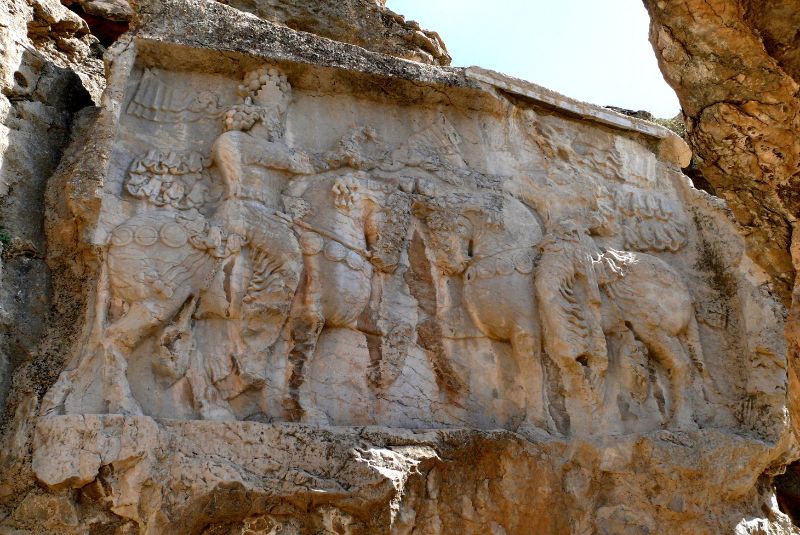
Naqshe Rajab and Naqshe Rostam, located only 3 kilometers apart, are two of Iran’s most important rock relief sites, yet they serve distinct historical and artistic purposes. While both are near the ancient city of Persepolis, their focus and content differ significantly.
Naqshe Rajab is dedicated to the Sassanid Empire and primarily focuses on royal ceremonies and religious figures. The reliefs here showcase key events like the coronation of Ardashir I and the victories of Shapur I, illustrating the power and divine right of the Sassanid rulers. The carvings are detailed and ceremonial, emphasizing royal authority and religious symbolism, with particular attention given to figures like the high priest Kartir.
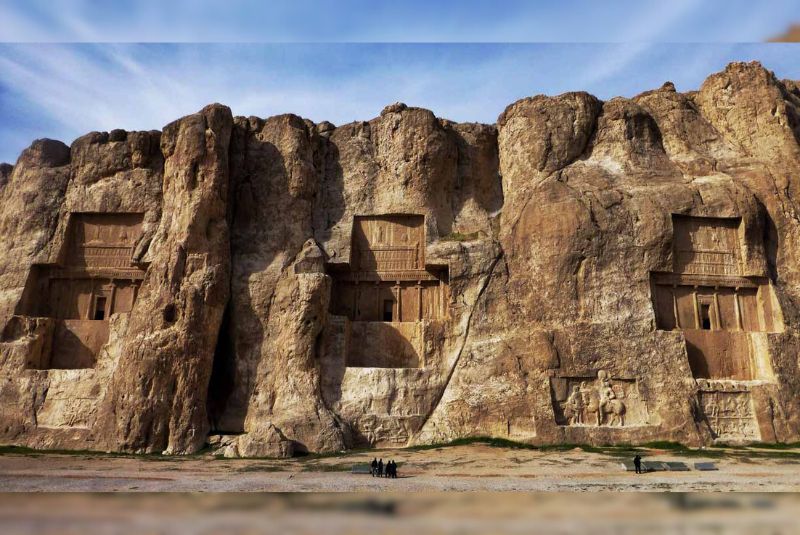
In contrast, Naqshe Rostam is a more diverse site, combining elements from the Achaemenid and Sassanid periods. Its most notable features are the tombs of four Achaemenid kings, including Darius I and Xerxes I, which are carved into the cliffside. Alongside these tombs are Sassanid reliefs that depict military victories and other royal events, similar to those at Naqshe Rajab but more varied in theme.
Artistically, Naqshe Rostam’s carvings blend different periods, while Naqshe Rajab’s reliefs are focused solely on the Sassanid era, offering a more unified narrative of royal and religious legitimacy. While both sites are valuable for understanding Persian history, Naqshe Rajab centers on Sassanid ceremonial life, whereas Naqshe Rostam provides a broader historical context spanning multiple dynasties.
Naqshe Rajab’s Historical Significant
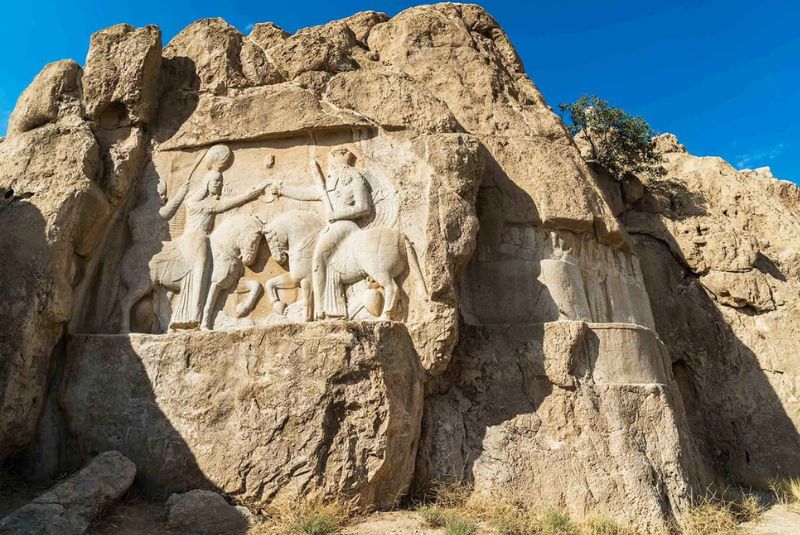
Naqshe Rajab reflects the rise of the Sassanid Empire, established by Ardashir I in 224 CE after his victory over the Parthian Empire. The Sassanids ruled Persia for over four centuries, bringing a renewed focus on Persian identity, Zoroastrianism, and royal authority. Naqshe Rajab’s reliefs were created during the early Sassanid period, underscoring the political and religious ideologies that shaped the empire.
At the heart of Sassanid ideology was the glorification of royal power. The carvings at Naqshe Rajab, particularly the coronation scenes of Ardashir I and Shapur I, highlight the belief that kings were divinely appointed. This connection between the monarchy and religion is further emphasized by the inclusion of Kartir, a high priest of Zoroastrianism, in one of the reliefs. His presence underscores the growing influence of Zoroastrianism as a state religion and its role in legitimizing the rule of the Sassanid kings.
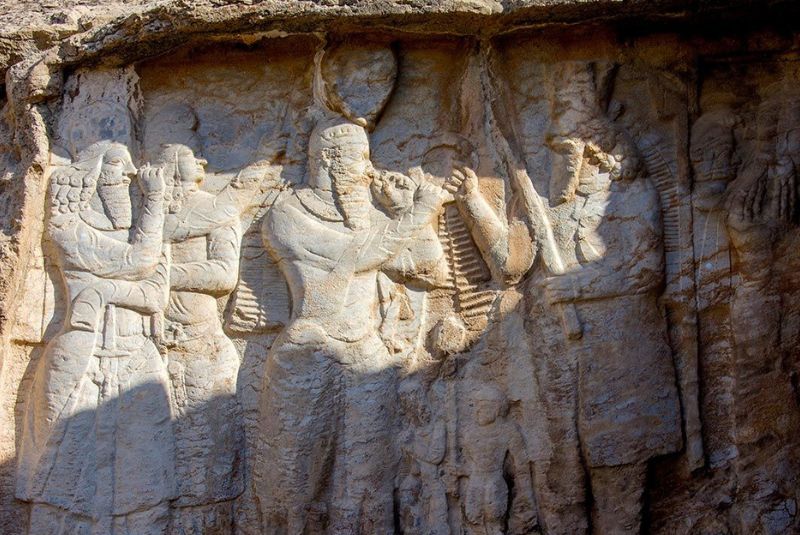
The carvings also serve to memorialize Sassanid military victories, especially those of Shapur I, who famously defeated the Roman Emperor Valerian. This relief at Naqshe Rajab not only celebrates the Sassanid military triumphs but also reinforces the empire’s dominance over its western adversaries.
Archaeological research at Naqshe Rajab has revealed additional insights into the religious and political functions of these carvings, further solidifying the site’s importance in Persian history. The reliefs capture a period of consolidation of royal and religious power, reflecting the political ambitions and religious ideals that defined the Sassanid Empire.
Nearby Attractions
Visitors to Naqshe Rajab will find themselves in the heart of one of Iran’s most historically rich regions, with several nearby attractions that can enhance their trip. These sites offer a deeper understanding of Iran’s ancient past, from the Achaemenid to the Sassanid periods, and are easily accessible from Naqshe Rajab.
Naqshe Rostam (3 km away)
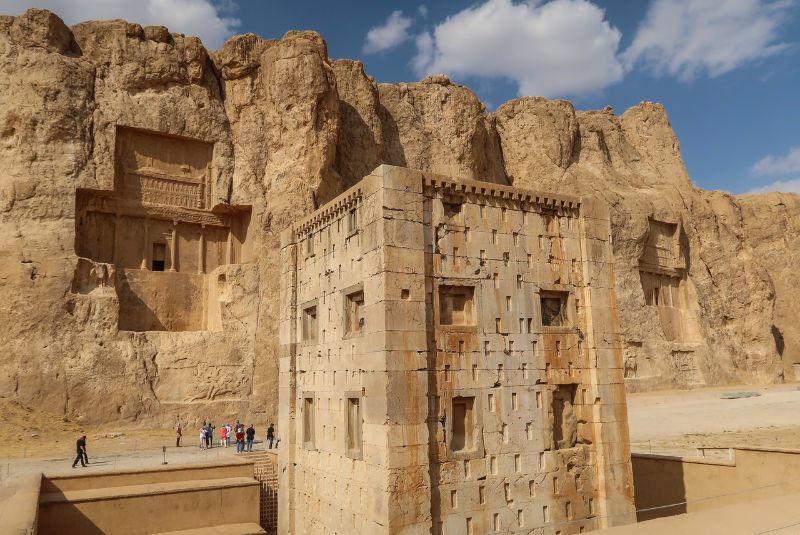
Located just 3 kilometers from Naqshe Rajab, Naqshe Rostam is an essential stop for history enthusiasts. This ancient necropolis is home to the tombs of four Achaemenid kings, including the famous rulers Darius I and Xerxes I. The tombs are carved into the cliffs, in a cruciform shape, symbolizing the grandeur of the Achaemenid Empire. In addition to the royal tombs, Naqshe Rostam features Sassanid rock reliefs that depict dramatic scenes of royal victories and coronations, including Shapur I’s victory over Roman emperors. The blend of Achaemenid and Sassanid history makes Naqshe Rostam a diverse and fascinating site.
Persepolis (6 km away)
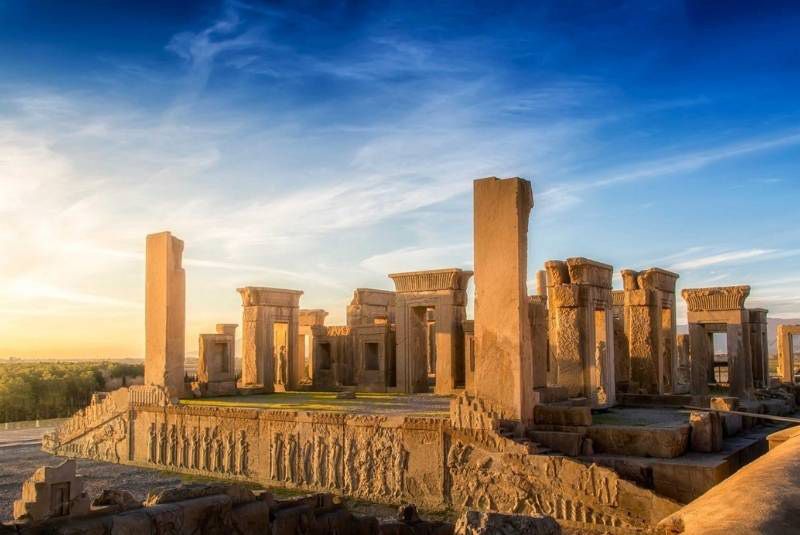
Just 6 kilometers from Naqshe Rajab, Persepolis is one of the most iconic ancient cities in the world. As the ceremonial capital of the Achaemenid Empire, Persepolis was the center of political and cultural life for centuries. Visitors can explore impressive structures such as the Apadana Palace, known for its grand staircases and detailed reliefs of tribute bearers, and the Gate of All Nations, which once welcomed dignitaries from across the empire. The ruins of Persepolis provide an awe-inspiring glimpse into the power and architectural brilliance of the Achaemenid kings.
Istakhr Ruins (within 10 km)
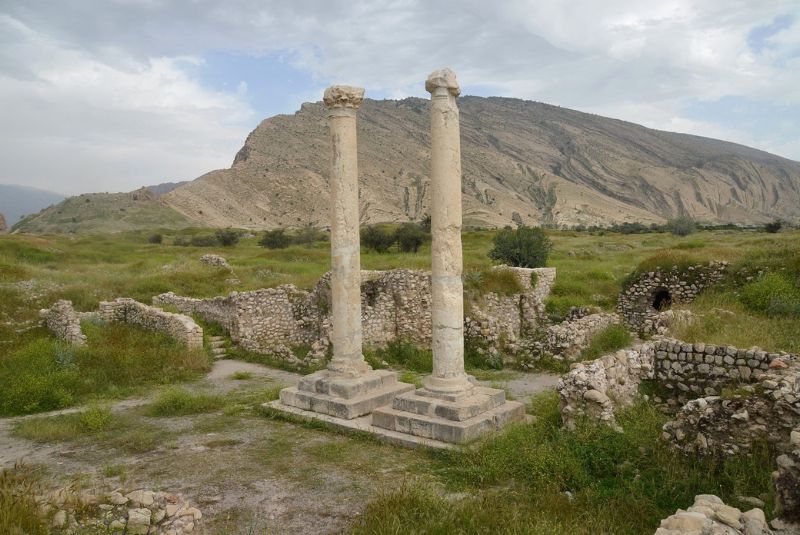
Situated near Naqshe Rajab, the Istakhr Ruins represent the remains of an ancient city that once served as a major political center during both the Sassanid and early Islamic periods. Although less well-preserved than Persepolis, Istakhr offers insight into the continuity of urban life in the region and its importance during the early Islamic era.
Pasargadae (50 km away)
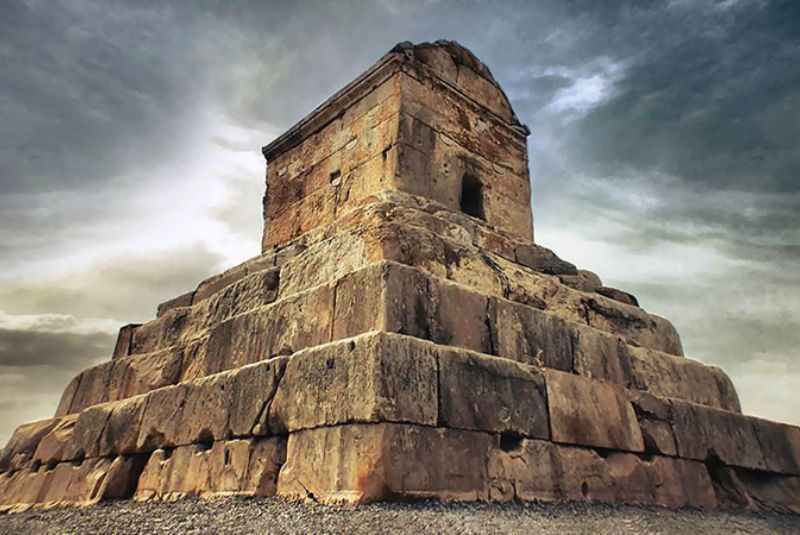
About 50 kilometers from Naqshe Rajab lies Pasargadae, the first capital of the Achaemenid Empire and a UNESCO World Heritage site. It is most famous for the Tomb of Cyrus the Great, the founder of the empire. This simple yet monumental structure is one of the most important historical landmarks in Iran. Visitors to Pasargadae can also see other architectural remnants, including palaces and fortifications, that reflect the early brilliance of Achaemenid architecture.
Qur'an Gate (Shiraz)

As you approach the city of Shiraz, you’ll pass through the Qur'an Gate, a historic gateway originally constructed during the Buyid dynasty. The gate has long been a symbolic entrance to the city, and it is believed that travelers passing under it were blessed for their journey. The Qur'an Gate is a popular spot for locals and tourists alike, marking the threshold to one of Iran’s most culturally vibrant cities.
Final Takeaway
Naqshe Rajab is an extraordinary destination for those looking to explore the legacy of the Sassanid Empire, and its proximity to other historic sites makes it an ideal stop on any itinerary through Iran’s Fars Province.
To make the most of your visit, consider traveling during the cooler months (spring and autumn) to avoid the heat. Plan a full day to visit Naqshe Rajab and its neighboring attractions, as there is much to see and experience.
Share your story!
Comment below and let us know about your Experience.
Your story inspires others!


Comment
Leave a Comment